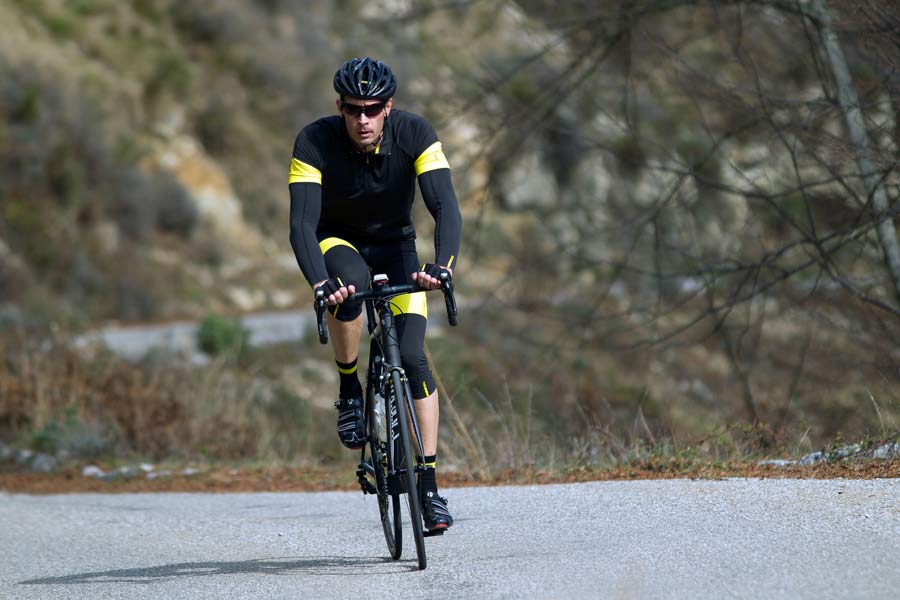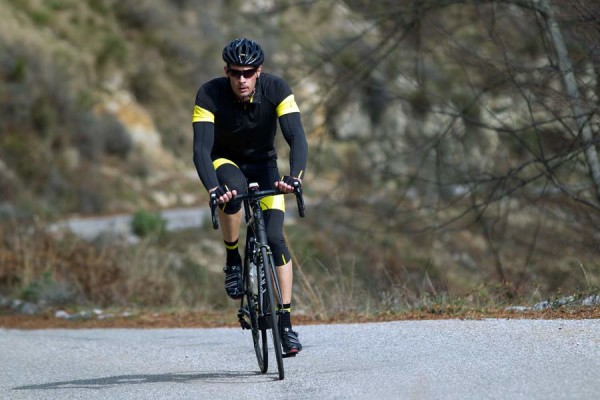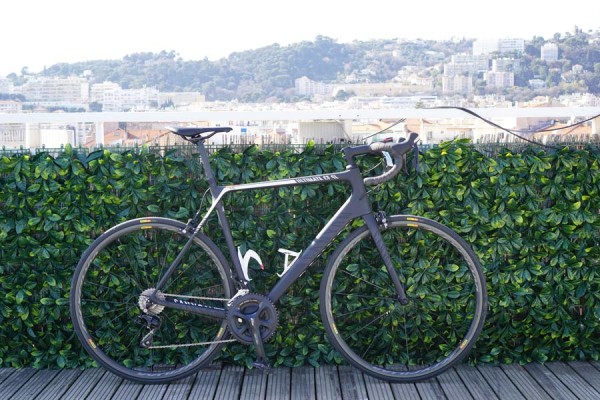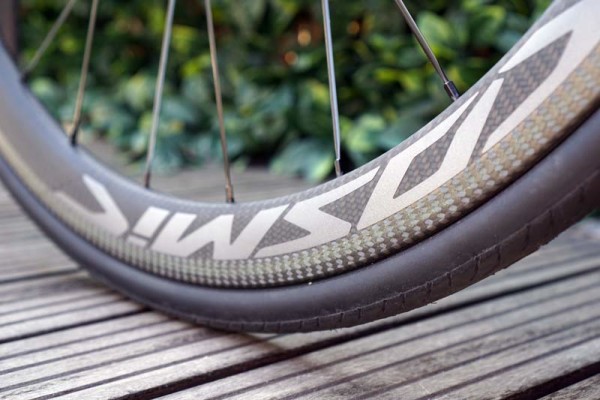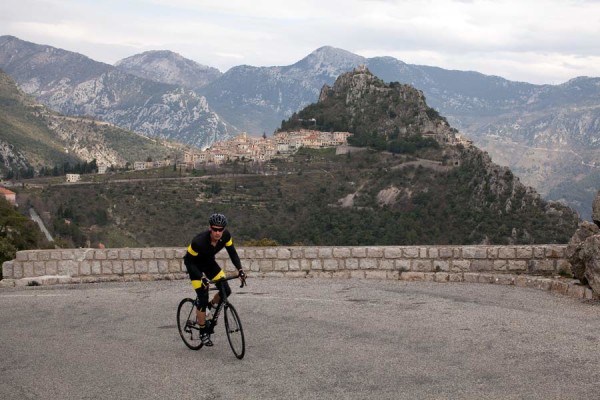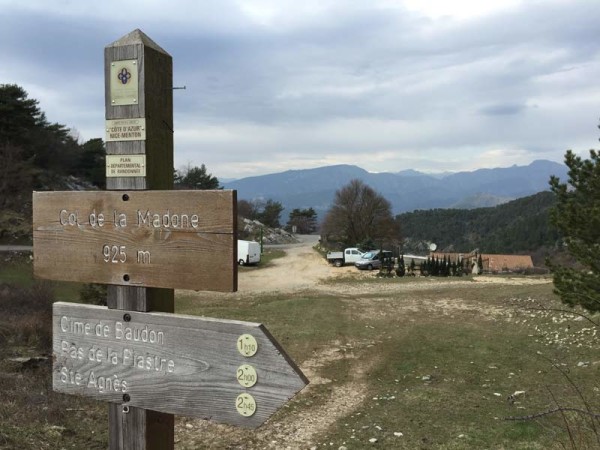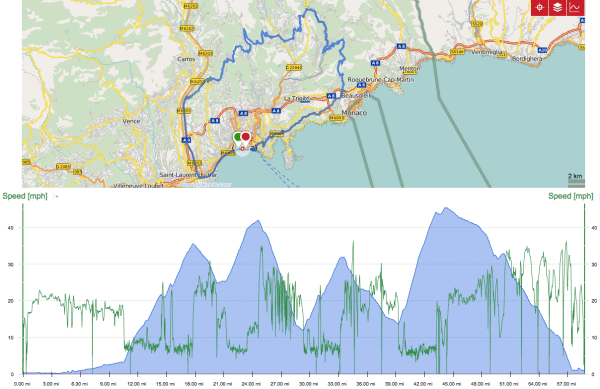When Mavic announced their new full carbon clinchers for the Cosmic and Ksyrium lines, they brought us over to Nice, France, to ride them on the course the pros raced for the final stage of the 2016 Paris-Nice. It proved an excellent testing ground, with long, demanding climbs, amazing, fast, and switchback-filled descents, and plenty of miles (er, sorry, kilometers) in between.
Immediately after, I attended SRAM’s Eagle mountain bike group launch. While the two may seem completely unrelated, the latter gave me a great perspective on the former. With such a lively comment section on Mavic’s post, and great explanations offered by their communications manager, it got me thinking about systems as opposed to wheels. And tires. And brakes.
For some time now, Mavic’s moved more toward wheel/tire systems as opposed to standalone components. And that’s how the new Carbon Pro SL Ksyrium and Cosmic systems are offered. You don’t get one without the other, and specific brake pads are included, too. Everything’s developed to work together, optimizing safety, aerodynamics, braking and general performance. And while you will be able to buy SRAM’s Eagle parts piecemeal if you want, that, too is designed to work optimally as a system. So, one could argue Mavic’s rims are still too narrow just the same they could argue SRAM’s new 50-tooth cog is too big. But in practice, it doesn’t matter. Unless you’re going to buy them and immediately replace one of the parts with something from another manufacturer, you’re going to get a system that works damn well…
My vehicle for testing both sets of wheels was the Canyon Ultimate CF SL. It proved quite enjoyable, offering a stiff platform for grinding up the climbs and racing back down the mountains. It’s quite stiff laterally, both at the front end and down low where the power transfer happens. So, any flex that might diminish handling was going to come from the wheels…fortunately, there was none.
I rode two big days with Mavic. The first day was a ~55 mile test of both wheels. We rode the deeper Cosmics along the coast, keeping a paceline moving briskly. Even Mavic admits that modern aero wheels are all very close to each other in terms of overall drag reduction, so on a normal ride for normal riders, aero is aero and these did a fine job of splitting the difference between being fast and being light. No complaints. We didn’t get to do a lot of braking, cornering or climbing until we switched to the Ksyriums.
With lighter, shallower wheels in place, we turned away from the water and toward the mountains.
The big climb of the day was the Col de la Madone. As the story goes, Lance Armstrong would test his pre-Tour de France fitness up this climb. If his time was good, he knew he was ready. I can’t say my time was good, but it certainly wasn’t the wheels’ fault. With 8.57 miles of mostly 8º inclines, the Ksyrium’s minimal rotational mass was much appreciated. They jumped quickly when necessary, but mainly just moved in lock step with my pedal strokes, no sluggish hesitation brought on by extra weight. But any well built lightweight wheel can chug up the mountains. Where it counts is how they handle the return trip.

If you’ve ever ridden an ultralight wheel that placed weight at the top of its priority list, high speeds and hard corners can be a little terrifying. Speed wobble or excessive flex can kill your speed by killing your confidence. Carbon rims are one way to address that. They’re stiffer without being any heavier than a lightweight set of alloy rims, which allows for a stronger wheel. That translates into better tracking and stability, which is critical as speeds climb above 25, 30, 35 or even 40 miles per hour.
The Ksyriums handled the speeds without any issues. I even slid off the back of the group so I could slalom back and forth across my lane at high speed. No wobble, no drifting, whether tucked for straight line drops, railing around a cliffside curve, or darting back and forth between the yellow and white lines. Honestly, it was impressive for wheels in this weight class. Almost as impressive as the braking…
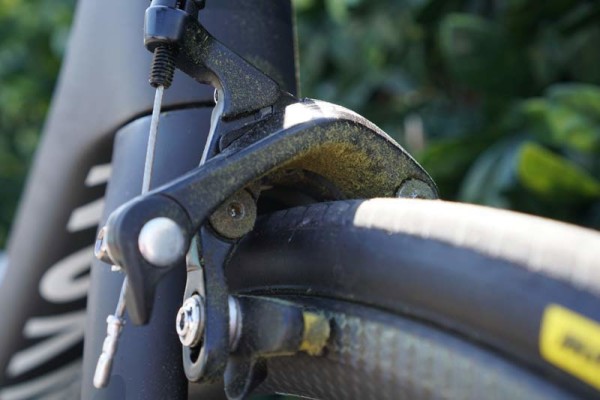
I’ve switched over to disc brakes on almost all of my bikes. Road, gravel, cyclocross and mountain, most of my stable uses rotors rather than rims to stop. So for the first few descents, I held back to reacquaint myself with rim brakes. Early sections had a lot of brake dragging, sometimes for quite a while, but there was no loss in modulation even when I’m sure the rims were getting pretty hot. With each successive descent I’d let it go just a bit more, then more, and more and more. By the end of the first day, I was letting myself hit higher speeds than I’m used to, right at my personal risk/reward limit, and beyond my previous rim brake comfort limit. I credit the wheels, so I stuck with the Ksyriums for day two, where we rode the ASO Paris-Nice Sportif:
The route covered 58.73 with 5,512 feet of climbing, with a different set of descents on which to really put the braking performance to the test. Around mile 27 was a wickedly fun set of 17 switchbacks that provided enough space between most to hit speeds in the high 20’s (mph) before sharp, 170º turns that required drastic reductions in speed. The Ksyriums let me brake hard and brake late to make the most of them. The next two big descents were long, winding roads, the latter being the same one used in the race. We raced down the mountain, along the coast and through the city at well over 30mph. The event had volunteers stopping traffic for most of that final mad run through the city, but there were a few red lights that required 33mph-to-zero stops in short order. And a few pedestrian crossings that required nimble flicks of the bar. All handled gracefully by the Mavics.
For rim brake holdouts, the new wheels have phenomenal stopping control. Not just power, because anyone can lock up a brake, but serious control over how your lever force affects speed reduction. It’s seriously impressive, and that was the sentiment shared by every other journalist I spoke to over the weekend. Plus, they make a sweet buzzing sound when you brake, like a pleasantly muted version of their Exalith.
For those that have moved on to disc brakes, the new Pro Carbon SL models are still worth a look. Personally, I like Mavic’s tires. I’ve found they hold up well, handle predictably and ride smooth. And I like their wheels. I’m riding the new Ksyrium Pro Allroads on the Parlee Chebacco, which are laterally stiff and well designed for their intended purpose (and tubeless ready!), and we really enjoyed the Cosmic Carbone SLR wheels we reviewed a long time ago. Now, Mavic’s taken all the good stuff from their years of experience and packaged it with the latest carbon rim tech and their new, high engagement hubs. I only had two rides on these new wheels, mostly the Ksyrium, but they were big rides that exposed them to every type of challenge the wheels are likely to see, and they passed with flying colors.
Not to sound like a marketing shill, but the systems approach makes sense. Do you really want a wider rim? Or do you just want to bump up to a 25mm tire? Does the actual rim width matter if the entire wheelset was built around that specific tire size and yields the optimum tire profile, aerodynamics and is built to meet approved industry safety standards? And if it delivers reliable, predictable performance ride after ride for years to come? Would that be OK, or would you rather have a specific number on the caliper’s gauge just because that’s what’s en vogue? I’m not judging, I’m just posing the questions. For me, the numbers are interesting, but it’s the end result that matters.
So, while I wish these were tubeless-ready, the biggest test is, among all the stuff I ride, would I recommend these to a friend? Yes, yes I would.
